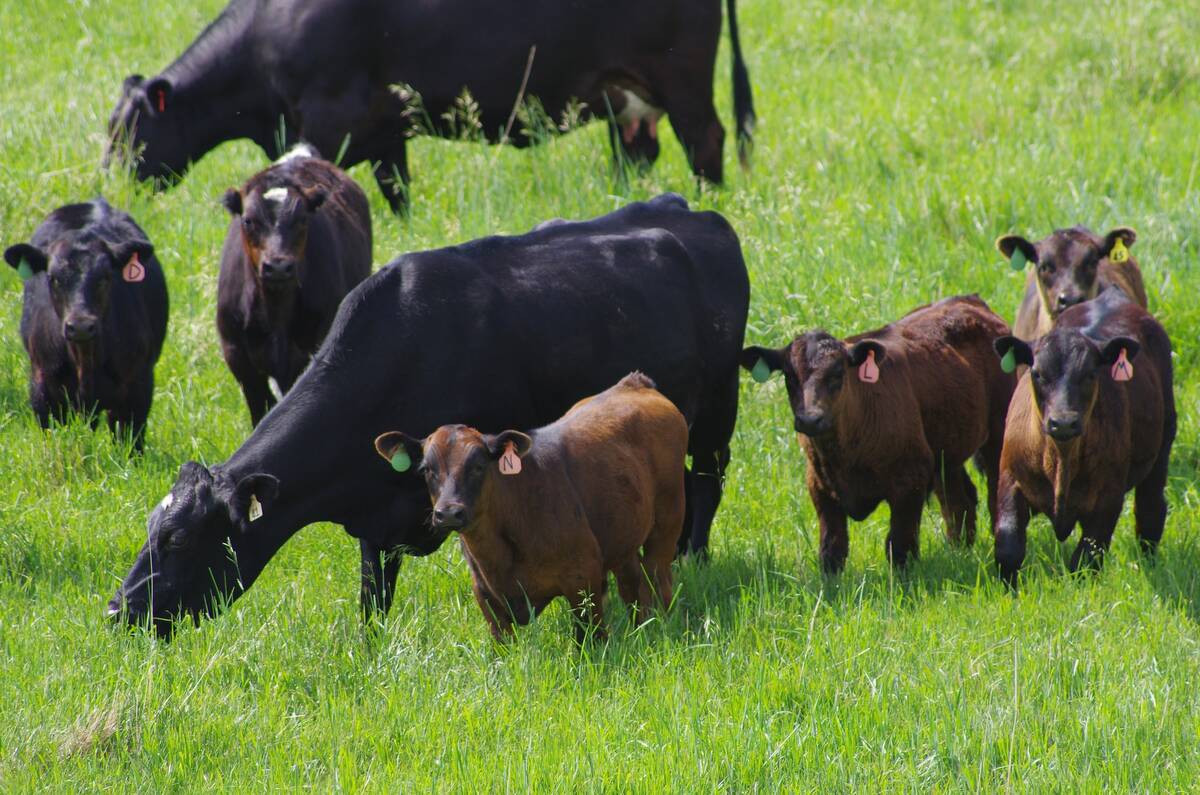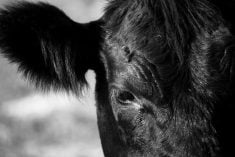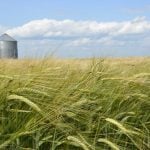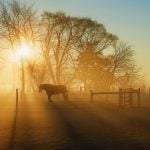When drought and the Great Depression introduced the 1930s, the wheat market collapsed. Oceans of wheat had replaced the sea of prairie grass that anchored the topsoil into place. Once the wheat dried up, the land was defenseless against the winds that buffeted the Plains.
The term “dust pneumonia” originated during the Great Depression when thousands of children died from inhaling particles of silica from incessant clouds of dirt and dust stirred by wind. James Willford’s article Children of the Dust, which appeared in Humanities magazine, references dust pneumonia as a human outcome of the worst ecological disaster in American history. So does Ken Burns’s documentary Dust Bowl.
Read Also

Diagnosising and preventing lump jaw in beef cattle
Causes, symptoms, treatment, prevention and prognosis of lump jaw in beef cattle
Dr. Dee Griffin, extension veterinarian, in NebGuide describes dust pneumonia as a sporadic respiratory condition in feeder calves without a well-defined cause. The veterinary term for feedlot dust pneumonia is acute interstitial pneumonia (AIP). In cowboy palaver, cattle with the condition are described as hard breathers and honkers. The condition appears to result from a hypersensitivity that can be associated with several causes that result in similar tissue damage. Typically, the highest incidence of dust pneumonia occurs in late spring, summer and early fall. The sporadic nature and uncertain list of causes of these diseases in feeder cattle make preventive measures difficult to economically justify and frustrating to implement, but reducing known risks may reduce the incidence.
Dr. Edouard Timsit, University of Calgary faculty of veterinary medicine, describes factors that contribute to bovine susceptibility to pneumonia. Environment, germs and immunity are top of mind when thinking of all the risk factors that could set the stage for pneumonia in cattle.
The forgotten factor is one beyond producers’ control and the reason why pneumonia will always be a problem — anatomy. Bovine lungs are very small relative to the animal’s oxygen requirements, explains Timsit. The total lung capacity of an adult cow is only 2.5 times greater than that of an average man, yet its resting oxygen requirement is more than 10 times greater. A cow’s lung capacity is 12 litres, its resting oxygen requirement is 124 litres per minute and it takes 30 breaths a minute to meet this demand. Compared to a species of similar size and structure, a horse’s lung capacity is 42 litres and its resting oxygen requirement is 49 litres per minute requiring only 11 breaths per minute. The high airflow rate coupled with weaknesses of the bovine lung structure itself leave ways for bacteria, viruses and other contaminants to penetrate deep into the lungs where they trigger infection and inflammation.
A long list of names describes acute interstitial pneumonia (AIP) in cattle. These include: dust pneumonia, atypical interstitial pneumonia, pulmonary adenomatosis, acute bovine pulmonary edema and emphysema, acute respiratory distress syndrome, fog fever, lungers and bovine asthma. An equally long list of potential causes has been associated with the disease. Feedlot employees refer to cases that develop in late summer as dust pneumonia.
According to Griffin, the term dust pneumonia has always made a good deal of sense. The feedlot condition occurs most often in the hot, dry and dusty part of the year. As the sun goes down on hot days and the air begins to cool, cattle stir or gather in bunches on pasture in response to swarms of flies. Cooler air is heavier than warm air and traps dust stirred by cattle. Often, a type of “dust fog” appears to develop over a feedyard or a herd on dry pasture. Dust particles less than four microns in size can travel to the bottom of an animal’s lungs. The fine, talcum powder-like dust that settles on surfaces around a feedyard is most likely small enough, if breathed, to travel to the bottom of the lungs. Remembering that dust — especially in feedyards — contains dried manure, it’s reasonable to assume that some particles carry bacterial endotoxins. Endotoxins, deep within the lungs, would damage lung cells and potentially initiate severe respiratory conditions.
Factors that contribute to dust pneumonia:
- Heat stress — cattle are very susceptible to heat stress. The thermoneutral, or comfort, zone for cows is an environmental temperature range of 41 F to 77 F (5 C to 25 C).
- In feedlots, the association between AIP and elevated ambient temperatures is due to the effect elevated ambient temperatures have on the eating behaviour of cattle and subsequent digestive disturbances.
- The amino acid tryptophan, when digested by Lactobacillus (and other bacteria) in the rumen, can produce a chemical, indole- 3-acetic acid. That acid, when converted to 3-methylindole (3MI), forms a very reactive chemical, 3-methyleneindolenine that is toxic to lung cells when absorbed.
- Estrus in feeder heifers can be associated with AIP. Research has demonstrated that heifers are more commonly affected by AIP than steers.
- The risk for an animal developing AIP is five to 10 times higher if they have been treated previously for pneumonia. One in-depth study reported 30 per cent of AIP cases also had concurrent mycoplasma bovis respiratory infection. Some cattle affected with bacterial pneumonia fail to completely eliminate the infection.
- Bovine respiratory syncytial virus (BRSV) is commonly accused of being the cause of AIP in feeder cattle. BRSV has been associated with outbreaks of AIP in weanling calves. Extensive diagnostic testing has failed to link the virus to AIP in feeder cattle.
AIP is a very difficult disease to treat. It is extremely important to identify AIP-affected cattle in the early stages of disease. One must be careful to handle these cases quietly and slowly as exertion further compounds their respiratory distress.
Veterinary guidance regarding diagnosis, treatment choices if recommended and respect of withdrawal times are a must for producers. Supportive therapy with anti-inflammatory medications (steroids and antihistamines) and prolonged broad-spectrum antibiotic coverage are frequently used. The outcome of treatment is frequently disappointing. Therefore, avoidance of medications with slaughter withdrawal requirements and salvage slaughter may be the best alternative in uncomplicated cases.

















